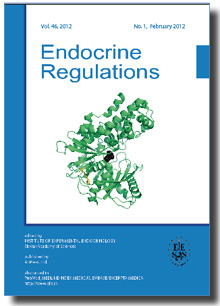Journal info
|
||
Select Journal
Journals
Bratislava Medical Journal Ekologia - Ecology Endocrine Regulations 2015 2014 2013 2012 2011 2010 2009 2008 2007 2006 2005 2004 2003 General Physiology and Biophysics Neoplasma Acta Virologica Studia Psychologica Cardiology Letters Psychológia a patopsych. dieťaťa Kovove Materialy-Metallic Materials Slovenská hudba 2025Webshop Cart
Your Cart is currently empty.
Info: Your browser does not accept cookies. To put products into your cart and purchase them you need to enable cookies.
Endocrine Regulations Vol.46, No.4, p.217–223, 2012 |
||
| Title: A new approach of light microscopic immunohistochemical triple-staining: combination of Fos labeling with diaminobenzidine-nickel and neuropeptides labeled with Alexa488 and Alexa555 fluorescent dyes | ||
| Author: Z. Majercikova, H. van Weering, S. Scsukova, J. D. Mikkelsen, A. Kiss | ||
| Abstract: The aim of the present study was to introduce a new approach of the light microscopic immunohistochemical triple-staining enabling to study the differences in the activity of at least two different phenotypes of neurons on the same histological section. For this purpose combination of Fos (a product of the immediate early gene) labeling with nickel intensified diaminobenzidine (DAB-Ni) and two neuropeptides labeled with Alexa488 and Alexa555 fluorescent dyes on cryo-processed 35-40 µm thick free-floating brain sections was selected. Methods. The parallel occurrence of three antibodies studied, i.e. Fos, hypocretin (HCRT), and melanin-concentrating hormone (MCH), was studied by a new methodic approach utilizing combination of Fos immunolabeled with DAB-Ni and HCRT and MCH labeled with Alexa488 and Alexa555 fluorescent dyes, respectively. Fos stimulation was induced by a single immobilization (IM0) for 120 min. Then, the rats were sacrificed, the brains removed, soaked with 30% sucrose in 0.1 M phosphate buffer (PB), cryo-sectioned throughout the hypothalamus into 35-40 μm thick coronal sections, collected, and washed in the same buffer for 10-15 min. Fos was revealed by avidin-biotin-peroxidase (ABC) complex and visualized by diaminobenzidine chromogen containing nickel chloride salt. HCRT and MCH neurons were visualized by the above mentioned fluorescent dyes. Evaluation of the Fos and fluorescent staining was performed in the computerized Axo Imager Carl Zeiss microscope using light and fluorescent illuminations. Results. All the antibodies used showed clear immunoreactive staining. Fos staining occurred in the form of black color located in the cell nuclei. HCRH and MCH neuropeptides showed clear green and red fluorescence in the cell perikarya, respectively. The final merged picture showed Fos protein in the activated green HCRT or red MCH neurons in the form of white nuclei. Conclusions. The present study clearly demonstrate that the combination of Fos labeling with DAB-Ni and neuropeptides labeled with Alexa488 and Alexa555 on cryo-processed 35-40 µm thick free-floating brain sections is an excellent approach providing further advantages for quick and reproducible triple immuno-staining enabling to compare the activity of at least two phenotypes of neurons on the same section. |
||
| Keywords: Alexa488 and Alexa555 fluorescent dyes, Fos, hypocretin, melanin-concentrating hormone, cryostat sections, triple labeling immunohistochemistry, rat | ||
| Year: 2012, Volume: 46, Issue: 4 | Page From: 217, Page To: 223 | |
| doi:10.4149/endo_2012_04_217 |
||
|
Price:
14.00 €
|
||
|
|
||

